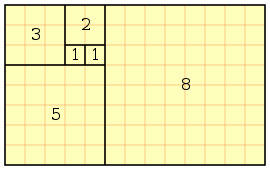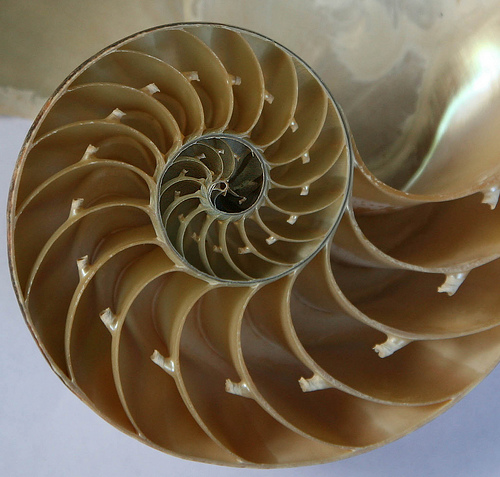The profs have been gracious enough to give a few ideas of their own for systems to use. So, for this class I will give a few suggestions for each of the ones they list, as well as any of my own.
The first recommendation I have is for anyone interested in doing this class to visit the Wooly Thoughts website.
99% of their designs are mathematically inspired and often illustrate complex (and simple) mathematical ideas in a creative manner. Website is here: http://www.woollythoughts.com/
The Ravelry group is here: http://www.ravelry.com/groups/woolly-thoughts
Now, onto the patterns!
The Fibonacci Sequence (1,1,2,3,5,8,13… where the next number is the sum of the prior two numbers) can be used to determine the number of rows in a striped scarf.
K fibonacci-felted-bag
fibonacci-pea-cap
hogwarts-fibonacci-scarf
double-knit-fibonacci-boomark
C:
robbys-fibonacci-afghan
fibonacci-scarf-3
hogwarts-fibonacci-scarf
Vertical-fibonacci-scarf
Pascal's Triangle is the Fibonnaci sequence involving more than 2 numbers in any given row. Easiest to show a picture than to explain it in words:
Phi is a creates a natural spiral – take a rectangle with a ratio of 1/1.618, draw an extra line so you have a square and a smaller rectangle – the smaller rectangle will also have a ratio of 1/1.618. This is also known as the Golden Spiral. You can see this shape in the curve of a nautilus shell, the intersections of a flower’s center or the spines on a pineapple.
This afghan by Wooly Thoughts shows s a perfect Golden Spiral ($) (C)
These take the "nautilus" form in nature, which is a Golden Spiral. (both K)
http://www.ravelry.com/patterns/library/chambered-nautilus
http://www.ravelry.com/patterns/library/nautie
These patterns are free, but not exactly Golden Spirals (although the brainwash bag comes close). The first two are C, the last K.
http://www.ravelry.com/patterns/library/stir-me-up-potholders
http://www.ravelry.com/patterns/library/pinwheel-candy
http://www.ravelry.com/patterns/library/brainwash-bag
Pi is a mathematical constant whose value is the ration of any circle’s circumference to its diameter – 3.141593… this is a non repeating decimal. You could use the numerical value to create stripes or be inspired to create something that is circular. If you think Pi is apple or cherry… convince us! (NOTE: Profs are really not going to be happy with just a pie slice that you made, without a cool story. Needs to show the math, have the symbol stitched on it somehow...)
C: amigurumi-pi
bowtie-pi shawl
K: EZ-100th-anniversary-pi-shawl-gull-wings
ode-to-pi-toque-2
apple-pi
math-geek-hat
Pi-socks---a-receipe
Binary is a numeral system using only two digits (usually 0 and 1) – you could make something that has two pieces, or use binary cables to spell words like someone’s name or something funny like “mine!” two pieces isn’t two items ie: two dishcloths are not to pieces just two items. Two pieces would be mittens, socks, top&bottoms baby outfit, etc…
K: binary
binary-cable-hat
binary-ass-hat
hot-geek-coffee-sleeve
C: Sorry, crocheters, no ready-made crochet patterns here! But keep in mind that things made with a single set of House colours are binary, as are socks, mittens...
Also, check out this site for a list of letters and numbers in binary: Binary Alphabet
Other methods for assigning numbers to letters are the Agrippan and Chaldean method – check out Wiki… you know you want to! ;-)
The Droste Effect is a special recursive picture where a smaller version of the picture is embedded within the original picture where you expect it to be, and an even smaller picture is embedded, etc. An archery target could be an example of the Droste effect because of the smaller and smaller circles one inside the next.
And anyone who has seen the Stephen Colbert painting he recently auctioned off for charity has seen an example of the Droste effect:
This was covered in Arithmancy in January 2010. A link to that class is here: Arithmancy January 2010
Take a careful look at the header for examples and page through the class submissions.
Here's a few ideas in addition to that:
C:
lyns-round-ripple-baby-afghan
pretty-in-pink-beret
spiral-dishcloth-2
spiral-hackysack
K:
vortex-5-dishcloth
http://www.ravelry.com/patterns/library/posey-2
raisin-beret
chevron-lace-beret
Geometry – make something that is inspired by a geometric shape and explain to us more about the shape.
Okay, basic geometry you learned in school. Two kinds of geometric forms out there: Regular polygons, where every side has the same length and angle between them, and non-regular polygons. For the sake of my sanity, and to keep from busting the server, I'm going to limit our examples to regular polygons only.
Geometric shape names: triangle, square, rectangle, diamond, circle, sphere, hexagon, octogon, dodecohedron, heptagon, pentagon
Triangle: C: triangle-hair-scarf K: ostrich-feather-lace-kerchief
Square: C: arches-square K: circle-takes-the-square hat
granny-square-market-bag colorful-squares-scarf

Rectangle C: perfect-purse K: Rectangle-hat-knit
Diamond: C: diamond-granny-bag K: diamond-fingerless-gloves
Circle: C: spiderweb-table-topper K: felted-coasters-hot-pads-and-beverage-jackets
Sphere: C: deal-crochet-sphere K: oh-balls
Hexagon: : C: phazelias-laptop-case K: coaster-2
Octagon: C: lotus-flowers-cuff K: victoria
Dodecahedron: C: celestine-crochet K: doddy ball
Heptagon: C: jewel-heptagonal-potholder K: heptagonal-wash-dish-anycloth
Pentagon: C: amiga K:soccer-ball-2







No comments:
Post a Comment